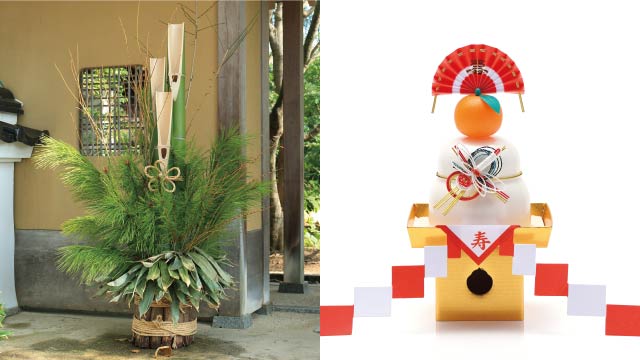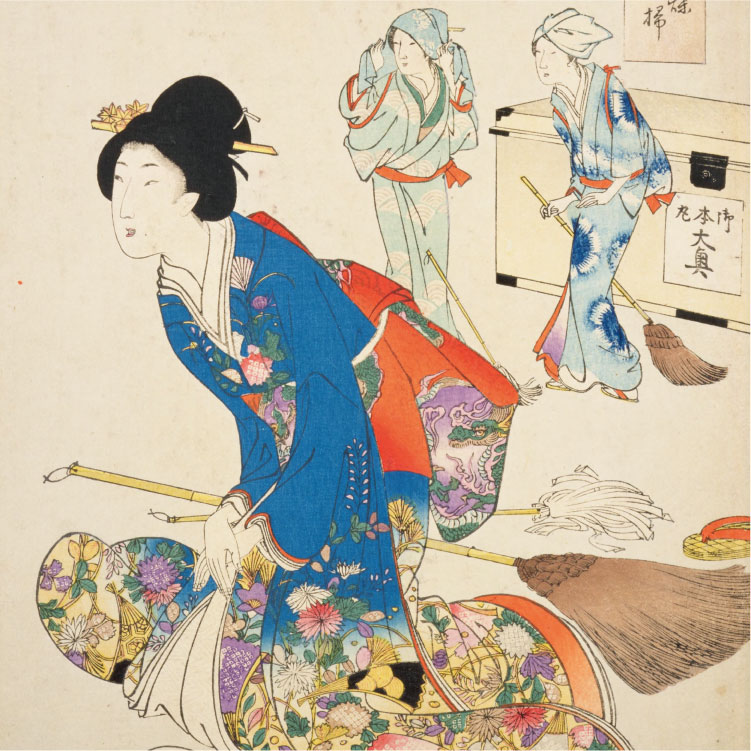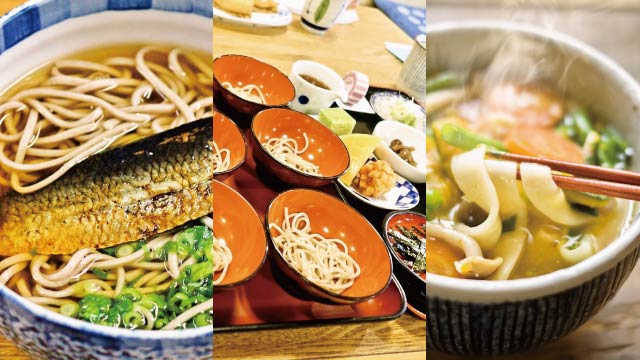News & Blogs
In this blog, we touch on diverse topics about Japanese food cultures, practices together with the culinary secret, TREHA®, and its important role in the Japanese food industry. We hope our blog helps you obtain in-depth knowledge of the secrets and science behind Japanese cuisine, shared from our kitchen, to yours.
Begone, all soot built up in the year!
It is a Japanese practice to clean the house thoroughly before the New Year. This is based on the belief in "a deity of the year (歳神様 Toshigami-sama), who visits each home on New Year's Day to bring happiness and health to the residents. The deity is also a god of the harvest. Since the god likes clean houses, people practice year-end deep cleaning from Dec. 13th to 28th to welcome the deity.
After the deep cleaning, a New Year decoration made out of pine branches (門松 Kadomatsu) will be displayed at the front door to let the deity know that the house is ready. The round rice cakes (鏡餅 Kagami-mochi) are another New Year decoration served as the offering to the harvest god.

Although the year-end deep cleaning nowadays is practiced before the year-end holidays, it was initially practiced precisely on the 13th of December, which is supposedly the luckiest day for any events and activities except weddings per the lunar calendar. The 13th of December is dedicated to soot sweeping (煤払い susu-harai) when the indoor soot and dust are swept to clean. According to the historical records in the Edo period (17th-19th century), the Edo castle in Tokyo was annually tidied up. Many shrines and temples are still practicing deep cleaning on the 13th of December.
The concept of thorough cleaning is similar to “spring cleaning” of the West, practiced when the climate becomes mild. Meanwhile, Japan’s customs choose to do it at the end of the year for the above reasons, even when it is cold outside. The act of soot sweeping also aims to purify all troubles and lousy luck within the year.

One hundred eight bell rings would set us free from earthy thoughts.
After the cleaning part is complete, temples all over Japan ring bells from New Year's Eve to New Year's Day. The number of rings is determined to be 108 times. In Buddhist belief, 108 is the number of earthly temptations or desires from which one should be free. The temples encourage people to make a fresh start in the New Year by ringing the bells. The bell starts ringing on New Year's Eve, and the 108th bell ring announces the arrival of New Year's Day.
At most temples, monks use a wooden bell hammer to strike the bell. Some temples allow visitors and parishioners to ring.
According to my acquaintance at a temple, parishioners visiting New Year's Eve can participate in the bell-ringing event. While the parishioners ring the bell, the head priest tracks the number of the rings using a tally counter to avoid miscounting. When no visitor is available, the head priest continues ringing the bell through New Year’s Eve.

Last but not least, let's slurp noodles for longevity!
It is no exaggeration to say that the climax event of New Year's Eve is to have buckwheat noodles (年越しそば toshikoshi soba). The whole family eats New Year's Eve noodles together. This custom has taken root in the Edo period (18th-19th centuries). Although there are various theories about the meanings or origin of this custom, one common wish is prosperity in the New Year. The noodles have to be consumed on New Year’s Eve, not New Year’s Day, which instead brings in lousy luck. The following are some of what is believed to be the origins:
Buckwheat noodles are thin and long, meaning extending longevity and luck.
Cooked buckwheat noodles are less sticky and easy to cut apart, meaning the hardships and disasters of the year are cut off to allow a fresh start in the New Year.
Goldsmiths use buckwheat flour to collect scattered gold dust at work, meaning buckwheat noodles bring in gold.
The custom of eating New Year's Eve noodles also differs by region. For example, in Kyoto Prefecture, soba noodles topped with herring stewed in sweetened soy sauce, nishin soba (にしんそば), is a standard New Year’s Eve menu. Meanwhile, in Iwate Prefecture, people enjoy Wanko soba (わんこそば), which a server keeps serving only mouthful soba in a small bowl until a guest with a full belly places a lid on the serving bowl!
In regions where other noodles are more of a local specialty than buckwheat noodles, people alternate them for New Year's Eve noodles. For example, in Kagawa Prefecture, famous for udon noodles (うどん), people prefer udon noodles to soba noodles. In Yamanashi Prefecture, people eat hoto (ほうとう), broad udon noodles like pappardelle pasta instead. In Okinawa Prefecture, people opt for Okinawa soba (沖縄そば), which is similar to ramen noodles but with lighter soup.
Though there is no particular rule on when to eat New Year’s Eve noodle of choice, it appears that a majority of people have it either as dinner or after 11:00 PM. Some people line up at their favorite soba shop early in the morning, before the store opens.
I definitely prefer enjoying New Year’s noodles after 11:00 pm. Such a delicious midnight snack justified by the Japanese tradition is merely irresistible. I am not worried too much because those 108 bell rings would let go of the extra calories and guilty pleasure.
What kind of noodle dishes would you create for New Year's Eve? We wish you all a Happy New Year!!

Did you find this blog interesting?
Please share it with your friends in the food service industry.
We regularly update the blog about the food culture of Japan, where TREHA® was discovered for culinary applications.
Click here and send us a message to subscribe.
Or hit us up on Instagram @trehalose_sensei!
You might also be interested in:
Japanese traditional food series 2: Chitose Ame, candy for healthy longevity (千歳飴)
Japanese traditional food series 3: Yuzu (柚子) and the winter solstice
Japanese traditional food series 5: Japanese traditional New Year’s dishes, Osechi-ryori (おせち料理)
Japanese traditional food series 6: Another traditional food for New Year’s celebration, mochi (餅)
Japanese traditional food series 13: Inari sushi offered to a deity of harvests

